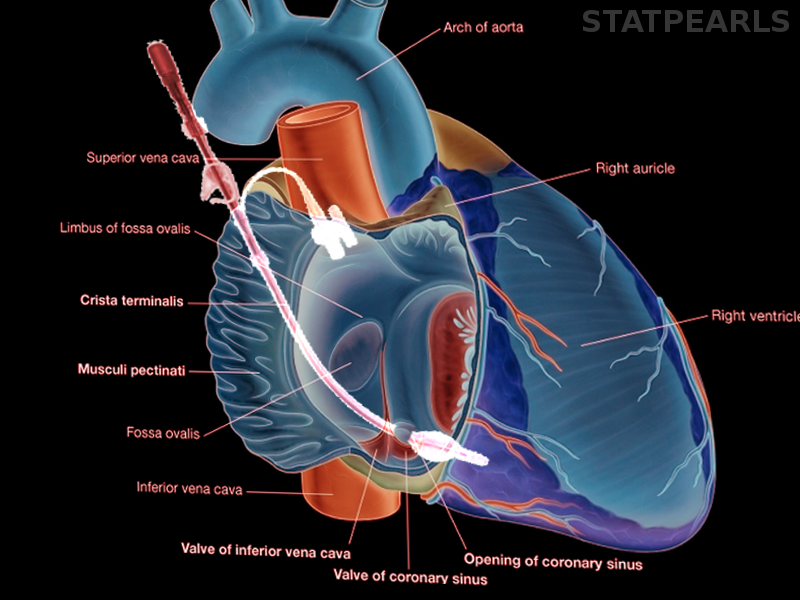[1]
D'Agostino RS, Jacobs JP, Badhwar V, Fernandez FG, Paone G, Wormuth DW, Shahian DM. The Society of Thoracic Surgeons Adult Cardiac Surgery Database: 2018 Update on Outcomes and Quality. The Annals of thoracic surgery. 2018 Jan:105(1):15-23. doi: 10.1016/j.athoracsur.2017.10.035. Epub
[PubMed PMID: 29233331]
Level 2 (mid-level) evidence
[2]
Singh JP, Houser S, Heist EK, Ruskin JN. The coronary venous anatomy: a segmental approach to aid cardiac resynchronization therapy. Journal of the American College of Cardiology. 2005 Jul 5:46(1):68-74
[PubMed PMID: 15992638]
[3]
Hochberg MS, Austen WG. Selective retrograde coronary venous perfusion. The Annals of thoracic surgery. 1980 Jun:29(6):578-8
[PubMed PMID: 6992722]
[4]
Lazar HL. Coronary sinus interventions during cardiac surgery. The Annals of thoracic surgery. 1988 Oct:46(4):475-82
[PubMed PMID: 3052337]
[5]
Hilton CJ, Teubl W, Acker M, Levinson HJ, Millard RW, Riddle R, McEnany MT. Inadequate cardioplegic protection with obstructed coronary arteries. The Annals of thoracic surgery. 1979 Oct:28(4):323-34
[PubMed PMID: 315762]
[6]
Becker H, Vinten-Johansen J, Buckberg GD, Follette DM, Robertson JM. Critical importance of ensuring cardioplegic delivery with coronary stenoses. The Journal of thoracic and cardiovascular surgery. 1981 Apr:81(4):507-15
[PubMed PMID: 7206757]
[7]
Gundry SR,Sequiera A,Razzouk AM,McLaughlin JS,Bailey LL, Facile retrograde cardioplegia: transatrial cannulation of the coronary sinus. The Annals of thoracic surgery. 1990 Dec;
[PubMed PMID: 2241379]
[8]
Fernando RJ, Johnson SD. Inability to Utilize Retrograde Cardioplegia due to a Persistent Left Superior Vena Cava. Case reports in anesthesiology. 2017:2017():4671856. doi: 10.1155/2017/4671856. Epub 2017 Dec 3
[PubMed PMID: 29333298]
Level 3 (low-level) evidence
[9]
Gundry SR, Kirsh MM. A comparison of retrograde cardioplegia versus antegrade cardioplegia in the presence of coronary artery obstruction. The Annals of thoracic surgery. 1984 Aug:38(2):124-7
[PubMed PMID: 6465990]
[10]
Haan C, Lazar HL, Bernard S, Rivers S, Zallnick J, Shemin RJ. Superiority of retrograde cardioplegia after acute coronary occlusion. The Annals of thoracic surgery. 1991 Mar:51(3):408-12
[PubMed PMID: 1998417]
[11]
Ehrenberg J,Intonti M,Owall A,Brodin LA,Ivert T,Lindblom D, Retrograde crystalloid cardioplegia preserves left ventricular systolic function better than antegrade cardioplegia in patients with occluded coronary arteries. Journal of cardiothoracic and vascular anesthesia. 2000 Aug;
[PubMed PMID: 10972601]
[12]
Gundry SR. Modification of myocardial ischemia in normal and hypertrophied hearts utilizing diastolic retroperfusion of the coronary veins. The Journal of thoracic and cardiovascular surgery. 1982 May:83(5):659-69
[PubMed PMID: 6210808]

